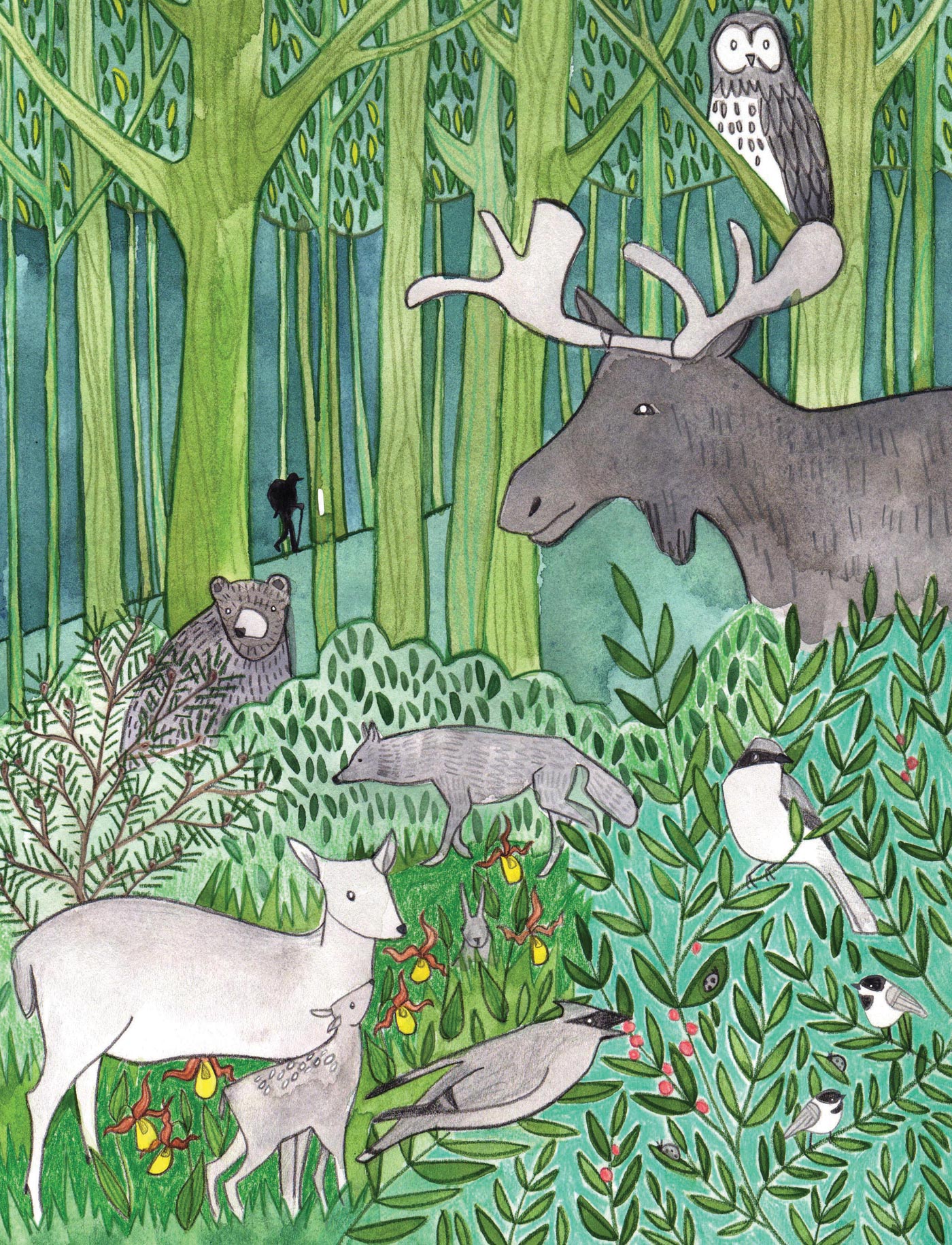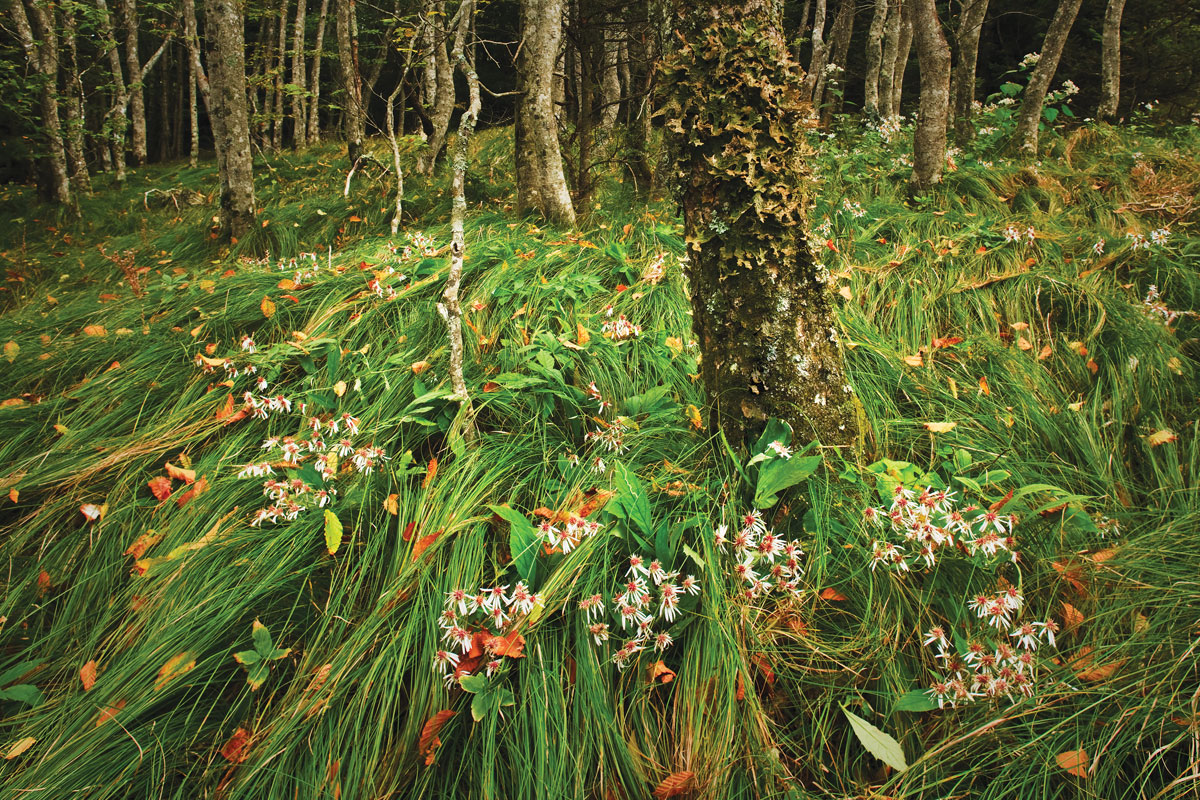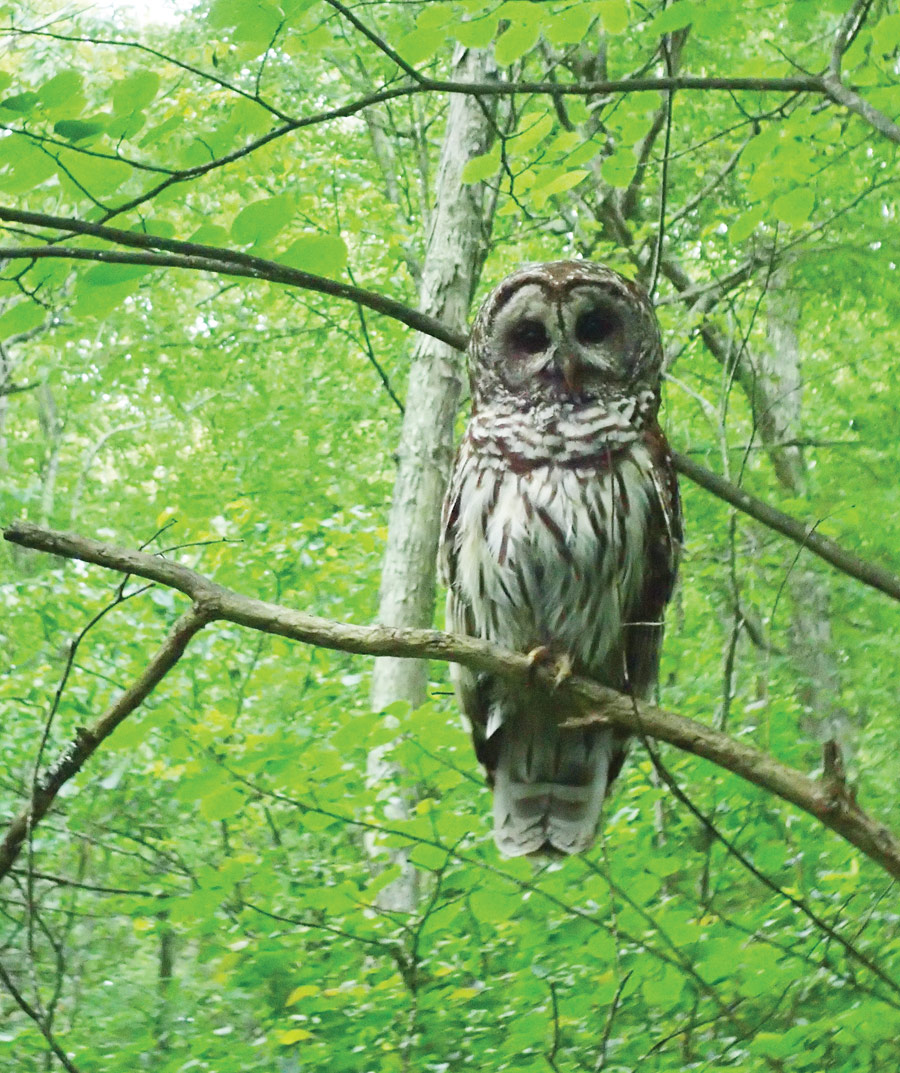

Population increases in the eastern U.S. have multiplied our carbon footprint, with the forests of the Appalachians being a crucial carbon absorption area in North America. Climate change has serious implications for endangered species such as moose, the red shouldered hawk, loggerhead shrike, and Virginia big eared bat, as well as plants like the yellow lady’s slipper, and pristine sparkling streams. If left intact, the Wild East can become an oasis in a nature desert, home to species fleeing other areas due to climate change and urbanization.

Forests cradle our well-being…How often do we quiet our mind and listen to the forest to learn what it needs?
Until the early 1800s, Appalachian forests remained relatively unscathed. But the arrival of the Industrial Revolution introduced a period of rapid expansion of logging to fuel the growing U.S. economy. Railroads and steam-generated power made lumber an industrial commodity at a large scale. By the early 1900s, the majority of eastern forests had been cut at least once, leaving a barren, ecologically-degraded landscape resulting in erosion and poor water quality.
Since the Appalachian Trail’s inception, the forests it passes through have been in stages of restoration from human and natural incursions. The Weeks Act in the early 1900s helped conserve over 50 national forests in the eastern U.S., eight of which the A.T. crosses through. Deforestation, invasive species, fire suppression, and other human interventions have weakened these ecosystems. Stalwarts of the Appalachians like the mighty American chestnut, graceful eastern hemlock, and aromatic Fraser fir have come under siege.
Forests cradle our well-being. When we look into nature, we gaze into a mirror reflecting our priorities. How often do we quiet our mind and listen to the forest to learn what it needs? Thoreau described tramping eight or ten miles through the snow to keep an appointment with a beech-tree, yellow birch, or pine. Perhaps we should slow down and do the same, while envisioning the A.T. with the same wonder. Realizing what a gift and responsibility it truly is should fuel our desire to protect it.
